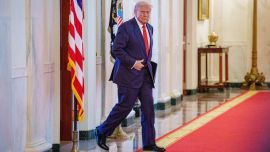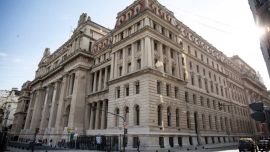Argentina cut its key interest rate for the third time in three weeks as officials bet on a sustained slowdown in consumer prices and race to shrink the Central Bank’s interest-bearing liabilities.
Policymakers lowered the benchmark rate to 50 percent from 60 percent, according to a statement released Thursday that cited a significant easing in price pressures over recent months.
Officials have cut rates five times from an initial 133 percent since President Javier Milei took power in December. Inflation slowed every month since then, from a three-decade-high monthly rate of 26 percent in December to 11 percent in March. Milei said over the weekend that April’s reading could be in the single digits, a sign that the government’s efforts to tame runaway price growth are working.
In a separate radio interview Wednesday, the president said he hopes to lift Argentina’s complex currency controls sometime this year. An integral step in that process is cleaning up the Central Bank’s balance sheet by lowering rates, Milei said, adding he imagined another rate cut would be made.
Since taking office, Milei’s government has lifted price controls, devalued the currency by more than 50 percent and posted Argentina’s first quarterly budget surplus since 2008. To achieve that, Milei froze nearly all public works and transfers to local governments, and kept spending on pensions and public salaries well below inflation. The lower house approved Milei’s sprawling economic reform bill on Tuesday, which will face a vote in the Senate in coming weeks.
The president’s economic team sees monthly inflation slowing much faster this year than analysts anticipate, forecasting consumer price increases will fall to 3.8 percent by September, according to a presentation seen by Bloomberg News dated April 4 and authored by a top deputy to Economy Minister Luis Caputo. Analysts surveyed by Argentina’s Central Bank in March foresee monthly inflation at 6.2 percent by September.
Annual inflation, however, remains eye-popping. From a year earlier, Argentine consumers are grappling with price gains of nearly 288 percent — the highest level since the crisis-prone nation exited hyperinflation in the early 1990s.
related news
by Manuela Tobias & Kevin Simauchi, Bloomberg




















Comments